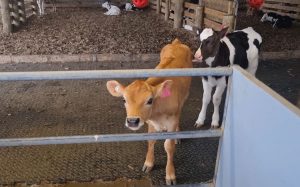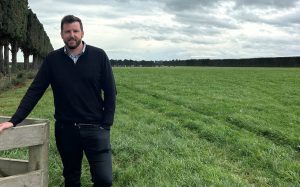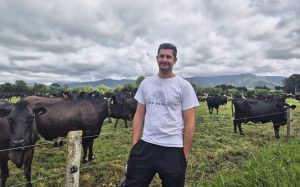
Shaun Goble 50:50 sharemilks 500 cows at Tisbury in Invercargill and lower-order sharemilks another 500 cows on a farm next door.
Allflex collars were put on the cows in the 50:50 operation this season.
Speaking at a DairyNZ field day on wearable technology for cows last week, he said the appeal of the collar technology was how it helped him manage two dairy farms.
‘‘It’s a challenge being in two places at once.’’
For the first time on the 50:50 operation, he had relied on the collars to detect when a cow was in heat.
Now, staff on that farm no longer needed to paint the tails of cows to indicate their pregnancy status and had more time for other tasks at a busy time of year.
He had saved more than $5000 from no longer having to buy tail paint for his 50:50 operation, he said.
In that operation, he had stopped using bulls in his breeding programme.
‘‘I find bulls a pain in the arse at that time of year because we have a lot going on.’’
Another appeal of the Allflex collars was how it integrated with his web-based herd management system Minda.
He signed a five-year lease on 501 collars, which cost him about $20,000 a year.
Installation of the system on the farm, such as transmitting technology, cost about $15,000.
‘‘We’ve had issues with one collar, but other than that it’s been real good.’’
Last season, without the collars, the six-week in-calf rate was 75%.
With the collars this season, the rate had dropped 1%.
Mating had been brought forward a week so he was happy with the result.
The empty rate this season had increased 6% on last season to 17%.
‘‘I’m a little bit disappointed.’’
Relying solely on artificial insemination might have something to do with the increase in empties, he said.
The cows on his lower-order sharemilking operation did not wear collars and had their tails painted this season.
In that breeding programme, he used a mix of artificial insemination and bulls.
The cows on the lower-order sharemilking farm had a six-week in-calf rate of 74% and 11% empty.
‘‘Which is on par with what we usually have.’’
Maybe bulls did have a part to play in a breeding system, he said.
Collars were not a silver bullet for better mating results.
‘‘It’s a tool which can make the job a lot easier, especially with staff management.’’
He hoped to be able to better utilise the data from the health alerts from the collars in spring this year, now the system had a better understanding of the cows and he had a better understanding of the system.
‘‘So you get more bang for your buck.’’
A health alert sent to his phone had helped him save some cows with late stages of milk fever.
‘‘I found them tipped up, so that was pretty cool.’’
The plan was to put collars on his lower-order sharemilking cows this month.

























